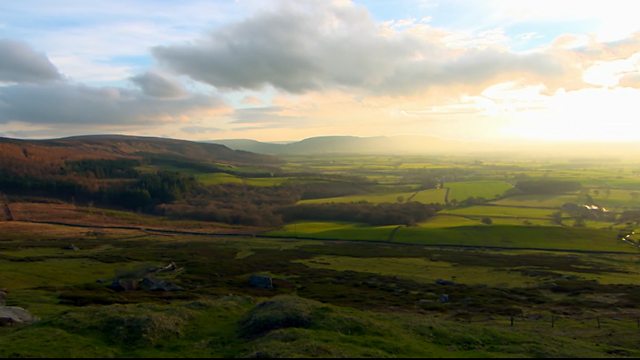Countryfile – Snowdrops – In the heart of the Cotswolds, within the majestic confines of the Colesbourne estate, Joe Crowley and Anita Rani find themselves amidst a breathtaking spectacle. Here, as winter clutches the landscape in its frosty embrace, a sea of resilience blooms underfoot. Millions of snowdrops, each a testament to nature’s hardiness, carpet the garden in a serene white, defying the cold and snow with their delicate beauty.
These perennials, known for their brief yet vibrant flowering period, make a fleeting appearance, vanishing by March’s end. Originating from the alpine regions, these flowers were introduced to England by monks in the late 16th century. Despite their slow adaptation to become a wild species, taking nearly two centuries, snowdrops have woven themselves into the fabric of the English countryside, marking their presence as a permanent fixture.
Anita Rani delves deeper into this phenomenon, meeting a descendant of horticultural pioneers who introduced some of the earliest snowdrop bulbs to the country. Through this encounter, she uncovers the paradox of the snowdrop’s existence: though indifferent to the cold, these flowers require careful stewardship to thrive in garden settings. Their resilience and beauty, it seems, are matched by their need for human care and attention.
Joe Crowley’s exploration reveals another layer to the snowdrop’s allure. Beyond their aesthetic appeal, snowdrops play a crucial role in the ecosystem, emerging as beacons of nourishment for winter wildlife stirring from its slumber. This early bloom not only signals the onset of spring but also serves as a vital food source for bees and other creatures, bridging the gap between the barren winter and the abundance of spring. Joe’s journey also leads him to discover the snowdrop’s influence on creativity and art. Joining a local artist, he experiences firsthand the inspiration drawn from these resilient flowers, engaging in the artistic process of painting and printing, capturing their essence in a celebration of their winter beauty.
Countryfile – Snowdrops
Meanwhile, beyond the tranquil beauty of snowdrop-laden gardens, Datshiane Navanayagam ventures to Devon, where a different story of community and resilience unfolds. Here, the focus shifts from natural beauty to the heart of community life – the village pub and shop. Faced with the threat of closure, these essential social hubs are witnessing a remarkable transformation.
Communities across Devon are coming together, rallying to preserve these institutions that serve not just as places of commerce, but as the very soul of village life. Through collective effort and determination, villagers are ensuring that their pubs and shops remain open, sustaining the social fabric and identity of their localities.
This journey through the landscapes of England, from the snowdrop-adorned gardens of the Cotswolds to the community-driven initiatives in Devon, paints a picture of a nation deeply connected to its natural heritage and communal values. The snowdrop, with its delicate appearance and underlying strength, emerges as a symbol of resilience, inspiring not only the admiration of those who witness its beauty but also serving as a reminder of the importance of care, stewardship, and community spirit.
Whether through the preservation of natural wonders or the safeguarding of social institutions, the stories of Joe, Anita, and Datshiane highlight the enduring bonds between people, nature, and heritage, weaving a narrative of resilience, beauty, and communal solidarity that resonates across the English landscape.
F.A.Q. about Countryfile – Snowdrops Episode
Q.: What makes the Colesbourne estate in the Cotswolds a significant location for snowdrops?
A.: The Colesbourne estate in the heart of the Cotswolds stands out as a significant location for observing snowdrops due to its breathtaking spectacle of millions of these resilient blooms carpeting the garden. This serene white blanket of flowers, thriving amidst winter’s frosty embrace, showcases the snowdrop’s hardiness and delicate beauty, making it a prime spot for enthusiasts and viewers alike to appreciate the resilience of nature.
Q.: How did snowdrops become a part of the English countryside?
A.: Snowdrops were introduced to England in the late 16th century by monks from the alpine regions. Despite their slow adaptation to become a wild species, taking nearly two centuries, snowdrops have intricately woven themselves into the fabric of the English countryside. Their enduring presence and widespread adoption across gardens and wild areas alike mark them as a permanent fixture and symbol of the changing seasons.
Q.: What unique characteristics do snowdrops possess according to the Countryfile episode?
A.: Snowdrops are celebrated for their brief yet vibrant flowering period, making a fleeting appearance that vanishes by the end of March. Their paradoxical nature, being indifferent to the cold yet requiring careful stewardship to thrive in garden settings, was highlighted in the episode. Moreover, their crucial role in the ecosystem as a source of nourishment for winter wildlife and their influence on creativity and art add layers to their allure, making them a subject of admiration and inspiration.
Q.: How do snowdrops impact the local wildlife during winter?
A.: Snowdrops play a crucial role in the winter ecosystem by emerging as beacons of nourishment for wildlife stirring from its slumber. Their early bloom not only signals the onset of spring but also serves as a vital food source for bees and other creatures. This bridging of the gap between the barren winter and the abundance of spring underlines the ecological importance of snowdrops in supporting biodiversity during the colder months.
Q.: How does the episode depict the broader theme of community and resilience?
A.: Beyond the tranquil beauty of snowdrop-laden gardens, the episode extends to Devon, showcasing a narrative of community and resilience through the story of village pubs and shops facing closure. The collective efforts of communities to preserve these essential social hubs underscore a broader theme of resilience and the importance of care, stewardship, and community spirit. This reflects a deep connection between people, nature, and heritage, weaving a narrative of communal solidarity that resonates across the English landscape.




